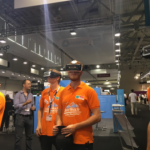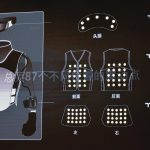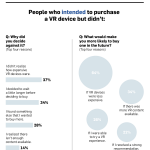Your iPhone Now Has virtual truth, Compliments of Google
Cardboard is the first main VR platform to arrive on the iPhone. however will it be the one who issues most?
could 29, 2015
(may 31, 2015) at the Google I/O convention, Google brought the app retailer for Cardboard—the sub $5 cardboard adapter that turns a smartphone into a virtual fact headset—to the iPhone. in the course of, Google beat Apple to the punch in offering a VR platform on the iPhone.
On the skin, that would possibly not sound like a tremendous deal. Isn’t Cardboard only a low-cost tech demo anyway? That’s an excellent argument—possibly the precise one, even. A 12 months seeing that launch, in spite of promoting 500,000 headsets, Cardboard hasn’t produced any should-play experiences. For now, it’s roughly a low-dedication means to take a look at out digital fact, with out the financial or technical limitations that come with buying an Oculus Rift and $one thousand gaming laptop.

That mentioned, don’t bring to mind Cardboard as a hardware play. think of it as a instrument play. Google is doing extra than just becoming a bit of paper to the iPhone. sure, lately, the Cardboard app largely simply permits you to just about discover cities and museum artifacts with your iPhone. however what will the cardboard app have inside it the following day if creators take advantage of leap? films? video games? the ability to discover damn close to anyplace on the earth?
With Cardboard, Google goes back to its roots. Screw excessive design. Make it low cost for consumers. Make it accessible to builders. Make a minimal manageable product, hook us on it, and preserve improving that thing to maintain us coming back. (See: Search, Gmail, Google doctors, Android, and every other Google service that now ideas your existence.) experiment publicly and let the chips fall the place they’ll.
in fact, this leaves numerous room for error. but constructing out this Cardboard ecosystem is something Google is taking very seriously. consider the following: Google’s former head of search design recently became the lead designer of cardboard; the corporate not too long ago employed Justin Lin, director of four the fast & The livid movies, to shoot a reside action short in virtual fact; it announced a software called leap, so that it will make producing VR content more uncomplicated, and they partnered with GoPro to announce a 360-degree video rig that may make the process of filming any movie into filming a digital reality film.
And sooner or later, Google has even admitted that “Cardboard” may no longer all the time be product of precise cardboard, hinting that the quest large has thought of a existence for Cardboard that goes past a lab test.

this doesn’t mechanically imply that Google goes to conquer VR on the iPhone—Google could also simply pull a Google and shut the whole software down in a single day. but it does provide it a head start in increase momentum and sneaking away with the iPhone’s VR market. If Apple needs in, it now has to to take hold of this turf again. however Apple most certainly won’t any time quickly. Why? It simplest goes after real property when it’s already proven to be price one thing. And digital truth is a local that’s so nascent that it’s exhausting to think about Apple touching it, let alone with a $5 chunk of paper that matches to your face. (living proof: Apple had a Google Glass various years sooner than Glass, however they didn’t launch it because they couldn’t prove a real value in the tech.)
Which begs the query: Is Cardboard the following Kindle app, a worm as a way to take over iOS from the inside and steal large bucks from Apple? Or is Cardboard, and cheapskate VR, so in advance of business viability and human usability, that Google’s strategy received’t matter in the long run? The latter is perhaps the case. but Google has made a sensible play to have any shot at the former.
(159)














